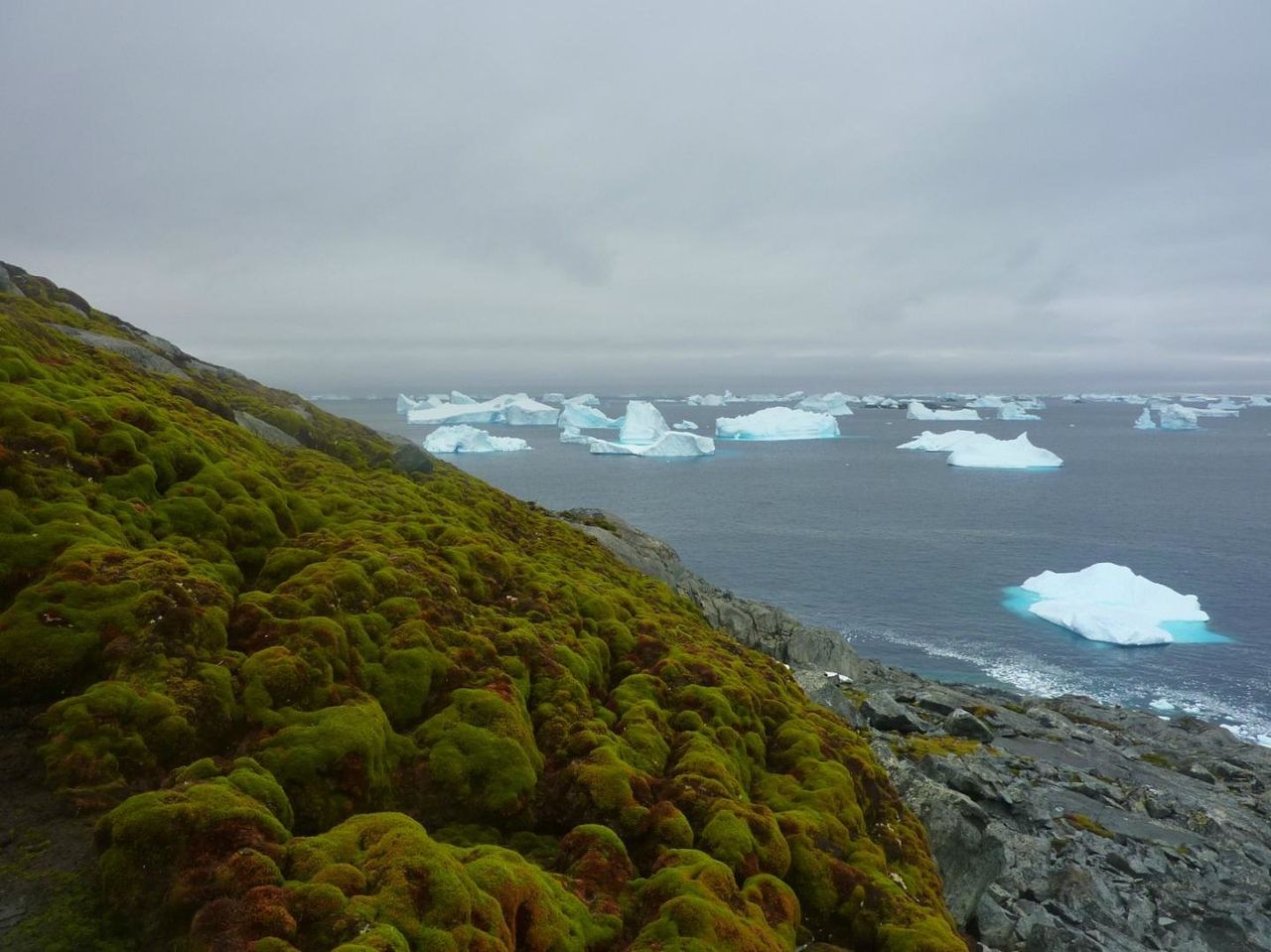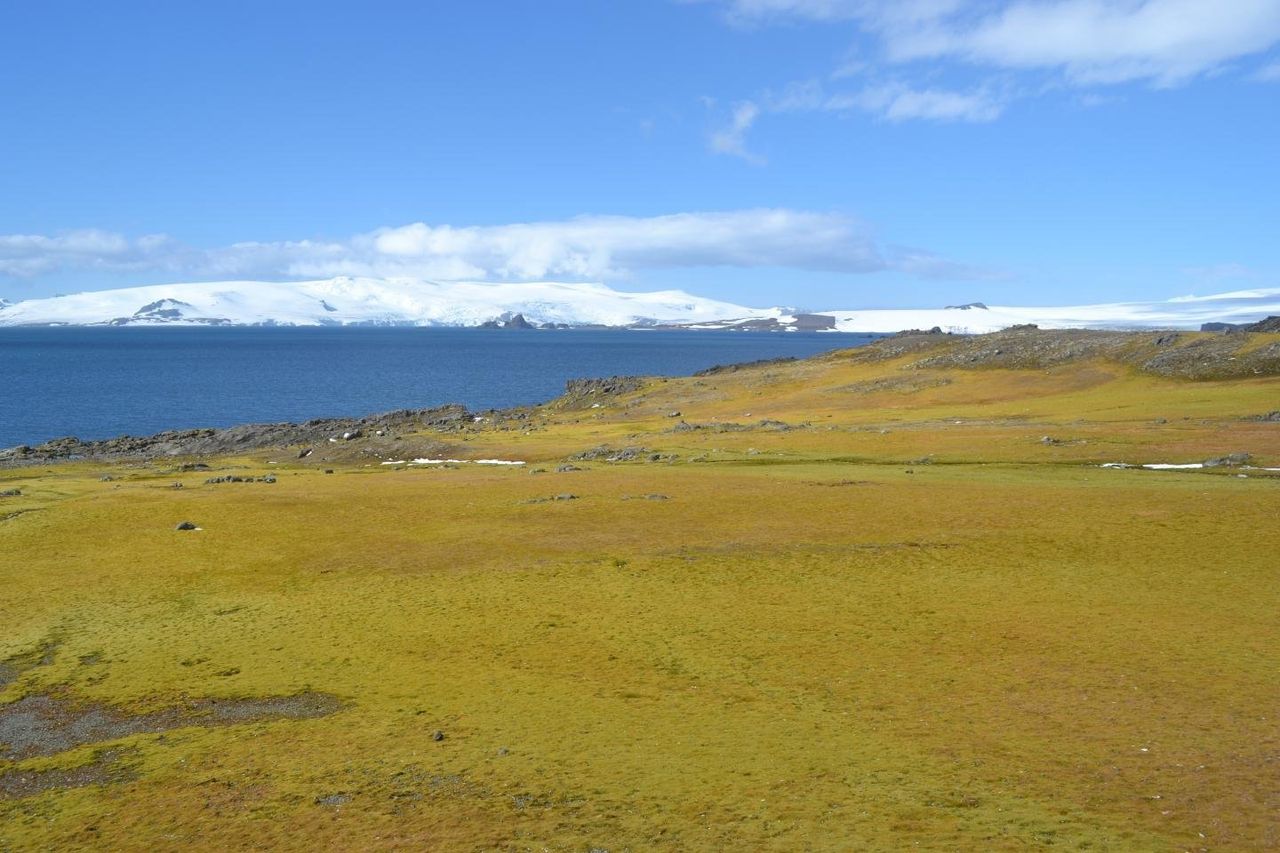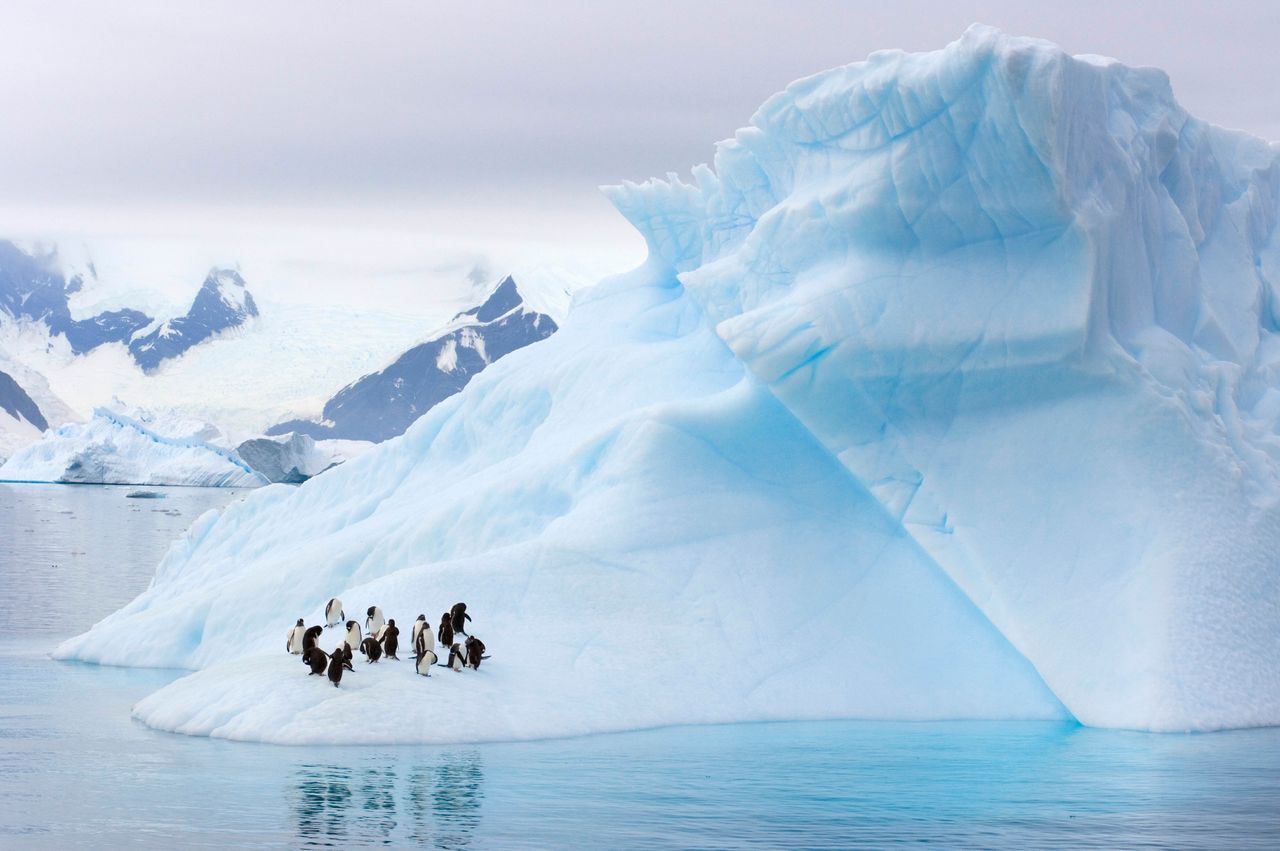Antarctica, the desolate southernmost continent boasting the coldest climate on Earth, usually brings to mind visions of ice, snow and penguins.
But global warming is transforming Antarctica’s icy expanses, new research from the University of Exeter in the United Kingdom shows. Parts of the continent are “greening,” researchers say — and fast.

Moss has been growing on the Antarctic Peninsula at a dramatically faster rate in the past 50 years, and warming temperatures are the culprit, the researchers concluded in a paper published last week in the journal Current Biology.
“If you’d taken a photograph of these parts of the peninsula 50 years ago it would have been a monochrome shot of ice. Nothing but glaciers,” study co-author Dominic Hodgson told CNN. “Today that photo would show extensive patches of green.”
The Antarctic Peninsula, the northernmost part of the continent, is known to be one of the most rapidly warming regions on Earth. Average temperatures there have jumped about 1 degree Fahrenheit each decade since the 1950s ― or a total of nearly 5 degrees Fahrenheit ― compared to a global average increase of just 1.4 degrees Fahrenheit since 1880.
Moss banks are found sporadically along the Antarctic Peninsula, where the slow-growing plants have accumulated over many millennia. Thanks to Antarctica’s cold conditions, deep layers of old moss have been “exceptionally well-preserved,” said researchers, offering insights into changes in moss growth and other ecological shifts over time.
In a 2013 study, Hodgson and his team studied moss core samples taken from the peninsula’s southern end and concluded that rising temperatures on the peninsula had prompted an “unprecedented rate of ecological change” over the past 50 years. For their latest study, the team collected core samples from three other sites on the peninsula — Elephant Island, Ardley Island and Green Island— across a distance of about 400 miles. The results, the researchers said, were troublingly consistent: The unprecedented changes are widespread across the peninsula.
The samples, which date back 150 years, showed that the amount of moss and the rate of plant growth has significantly spiked since the 1950s. Now, it is four to five times higher, researchers said.
“This gives us a much clearer idea of the scale over which these changes are occurring,” Matthew Amesbury, the study’s lead author, said in a news release. “Previously, we had only identified such a response in a single location at the far south of the Antarctic Peninsula, but now we know that moss banks are responding to recent climate change across the whole of the peninsula.”
The researchers said they now plan to study moss core records dating back thousands of years to get a clearer picture of ecological changes before and after human-caused climate change.

The researchers said the rising temperatures may soon make the Antarctic Peninsula a very different place. “The sensitivity of moss growth to past temperature rises suggests that ecosystems will alter rapidly under future warming, leading to major changes in the biology and landscape of this iconic region,” said study co-author Dan Charman in a statement.
Charman added that Antarctica is following in the footsteps of the planet’s other polar region, the Arctic, which has been experiencing a similar greening because of climate change. The changes aren’t just ecological; melting Arctic and Antarctic ice has the potential to significantly contribute to sea level rise in the coming decades, which poses a threat to millions of coastal dwellers around the globe.
―
Dominique Mosbergen is a reporter at HuffPost covering climate change, extreme weather and extinction. Send tips or feedback to dominique.mosbergen@huffingtonpost.com or follow her on Twitter.
